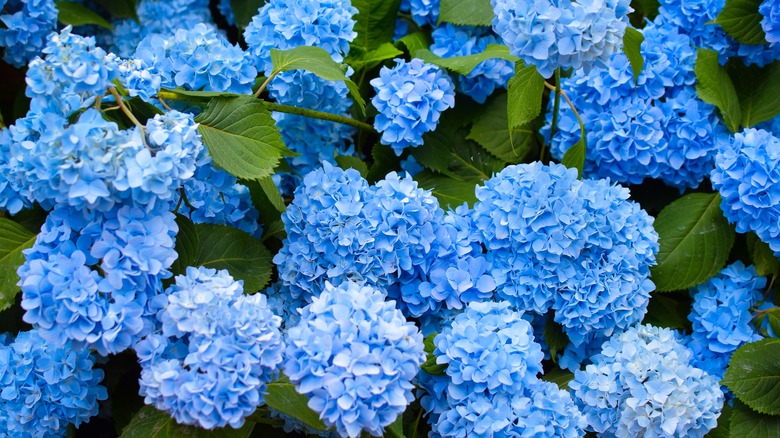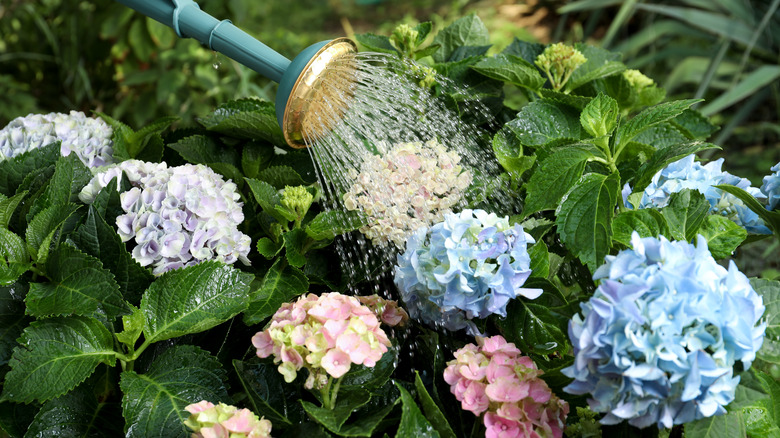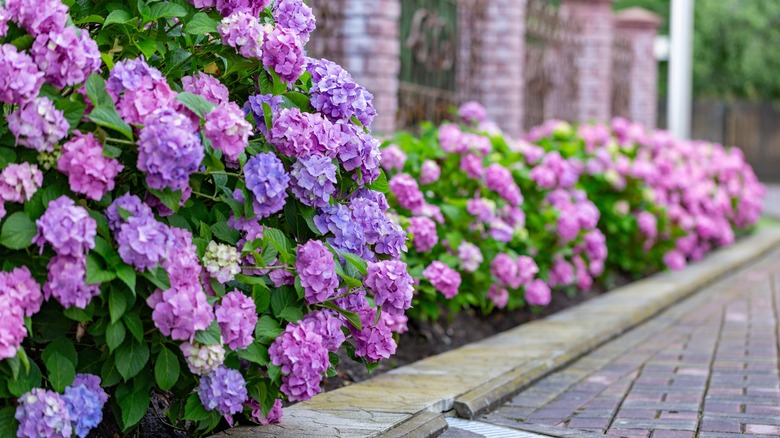The Best Method For Watering Hydrangeas
Hydrangeas are a common sight in flower fields throughout the spring and summer months. These colorful flowers can liven and add curb appeal to any home, but they require mindful attention and care in order to look their best. Hydrangeas are needy plants that need to be cultivated in ideal environments to thrive. Such environments usually involve ample amounts of water and moderate sunlight. For optimal growth, water hydrangeas around three times a week, especially when first planted, as the crop needs to receive about an inch of new water each week to remain in proper condition.
A balanced combination of water, sunlight, fertilization, and space is required to keep your hydrangeas healthy. Though, no two hydrangea breeds are exactly the same, so it's important to research the conditions deemed most suitable for your type of hydrangea before taking the initiative to grow them. This may seem like too many rules to remember if you're a novice gardener. However, simply learning to look for warning signs from your flowers can help you determine the best courses of action when treating them. Here's the best method in which to water your hydrangeas, along with other helpful hints to keep in mind when planting them.
Water often, but not too often
Hydrangea owners should water their plants deeply at least twice a week to make sure the soil and roots underneath remain hydrated, even after the sunniest times of the day. Consider watering even more frequently if you live in an area accustomed to drought and high temperatures. Water your hydrangeas in the morning, so the roots have time to absorb the water before the sun reaches its highest and hottest position in the sky. Aim the water source directly at the soil rather than at the leaves or flowers. Doing so reduces the chance of harmful growths forming along the most visible elements of the crop. Gardeners should also aim to use a device that doesn't disperse water at too extreme a pressure. Instead, opt to use a soaker hose or drip irrigation system, if possible, both of which give you control of the water's flow and direction. Adding mulch on top of the soil can help the plant retain its moisture.
However, hydrangeas may suffer if they receive too much water at once. Overwatering can lead to mildew or other fungi forming along the roots, which can severely damage or even kill the entire plant. Hydrangeas also run the risk of drowning if doused with too much water, which could prevent the flowers from blooming during their respective season. Overwatered hydrangeas can sometimes be salvaged by pruning away the damaged roots and transporting the plant to a more adequate environment.
How to know your hydrangeas are unhealthy
Hydrangeas give off many warning signs when they're not receiving the nutrients they need, or when they are receiving them in too large quantities. When your hydrangea's old and new leaves begin to drop from its stems, it's likely the plant has suffered from overwatering. The leaves may also turn yellow from overwatering, or the plant as a whole may experience a stunt in its overall growth. Underwatering, on the other hand, may lead to your hydrangea browning and wilting. A hydrangea's leaves may also turn brown when receiving too much water, so feel the leaves' texture to determine the treatment your plant needs. Dry leaves that are crispy to the touch are a sign your hydrangea is thirsty. If your hydrangeas have started to wilt or become dingy, try cutting off some blooms and placing the stems in hot water to freshen them.
Planting your hydrangeas in the appropriate habitat is crucial to ensuring they grow healthily and survive many seasons. Hydrangeas won't last long in swampy, marshy environments, nor will they thrive in spaces that receive too much direct sunlight. These flowers enjoy a combination of sun and shade, so they generally fare well in front or backyards, or along the north- or east-facing sides of a house. If you plan to plant hydrangeas near the perimeter of your house, account for extra space between the crop and the structure to prevent the roots from interfering with the home's foundation.


